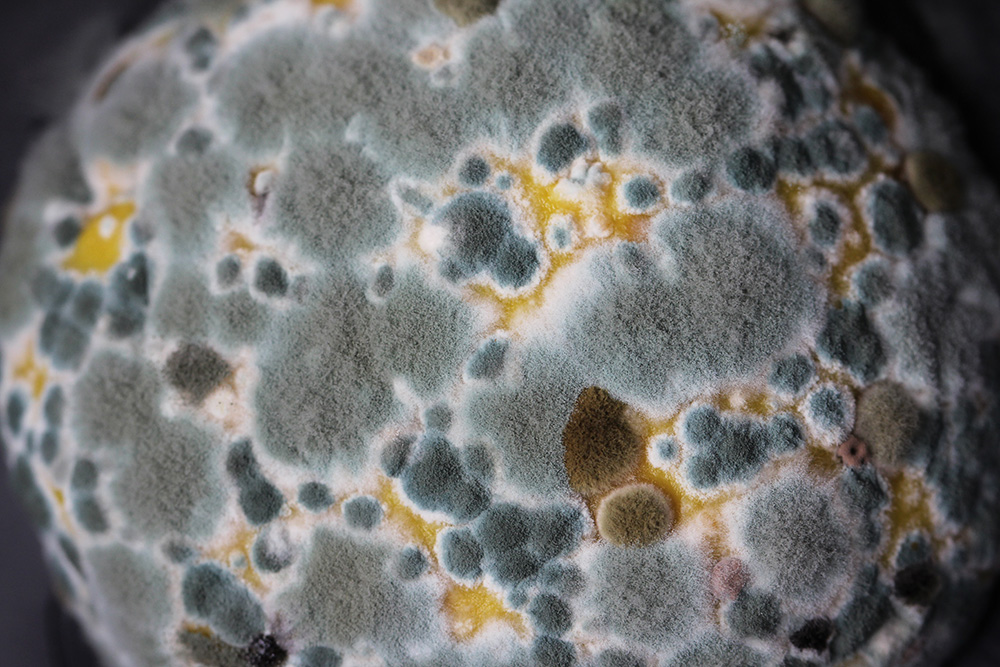
The only thing you want growing on you in the workplace is your boss and colleagues, definitely not mold spores. Identifying mold in the office is the first step to properly treating it, but preventing it in the first place is even better! Let’s look at the dangers of mold exposure and learn how to prevent it from happening.
The Dangers of Mold Exposure
When mold is disturbed, it can release microparticles called spores into the air, exposing us to them. Spores are mildly toxic and can result in physical irritation and even infections. Symptoms may include:
- Eye, nose and throat irritation
- Respiratory difficulties
- Skin irritation
- Nausea
- Dizziness
- Headache
- Fatigue
- And lung infection.
Though it’s proving to be a myth that mold (“black mold” specifically) can cause severe illness such as psychosis and death, it’s still not ideal to have prolonged exposure to concentrations of airborne spores.
Where Does It Grow?
Mold tends to thrive in moist, dark areas, especially if there’s been a water leak/flooding there before. Look for dark cluster spots and a musty smell;
- In areas with low circulation & high humidity
- In water/condensation sources (windows, plumbing, appliances)
- In places with drywall & carpet
- Under wallpaper, on wood, on paper
- In the basements of buildings with poor foundations/on hills
- Near humidifiers
- On mattresses/cushions
- In bathrooms with showers/saunas.
Buildings are prone to stagnant air and plumbing issues, so monitoring these areas will provide the early clues that would suggest mold growth and treating the areas preemptively will help prevent it.
Preventing Mold Growth
A mold problem can result in thousands of dollars of treatments and repairs. Once it’s growing, it often becomes intertwined with the base material and is very hard to extrapolate and eliminate, leaving it at risk of regrowing. Workplaces may find themselves not only at risk of harming their staff and selves but at risk of a lawsuit as well. Not ideal. There are many strategies that, when implemented in tandem, can be crucial in preventing the growth of mold in the first place.
Ventilation
Making sure there’s air flow, and opening doors and windows for brief periods can really improve the circulating air quality and make it harder for mold to develop.
Dehumidify
Keep the air neutral to dry so that mold can’t grow as easily. Dampness is where it thrives.
Monitor Water Sources
Be sure to fix any leaks promptly and let the area dry out well. Fixing the root issue rather than issuing a bandaid fix is important; good plumbing and roofing pay off. Address clogged eavestroughs/gutters as well.
Air Filter/Plants
Using a HEPA air filter to remove tiny particles, including airborne mold, from the air is very helpful in preventing mold growth. Plants like English Ivy, Peace Lilies, Palms, and Snake plants are extremely helpful in preventing moisture and mold. They’re also tolerable of low light office conditions.
Cleaning
Regular cleaning tasks should be carried out by selective staff daily to help prevent initial growth and maintain conditions. Most importantly, a regular professional clean will achieve the diligence needed for ease of mind, along with a yearly deep clean. Professional cleaners like City Wide Cleaning Services can scrub and inspect every nook and cranny, combatting spores with robust acidic solutions, safety protocols, and professional skill. They’ll maintain a pristine environment to hinder growth and will kill or remove contaminated materials, leaving you with a clean and safe space that will stay that way. Reach out to them here!
